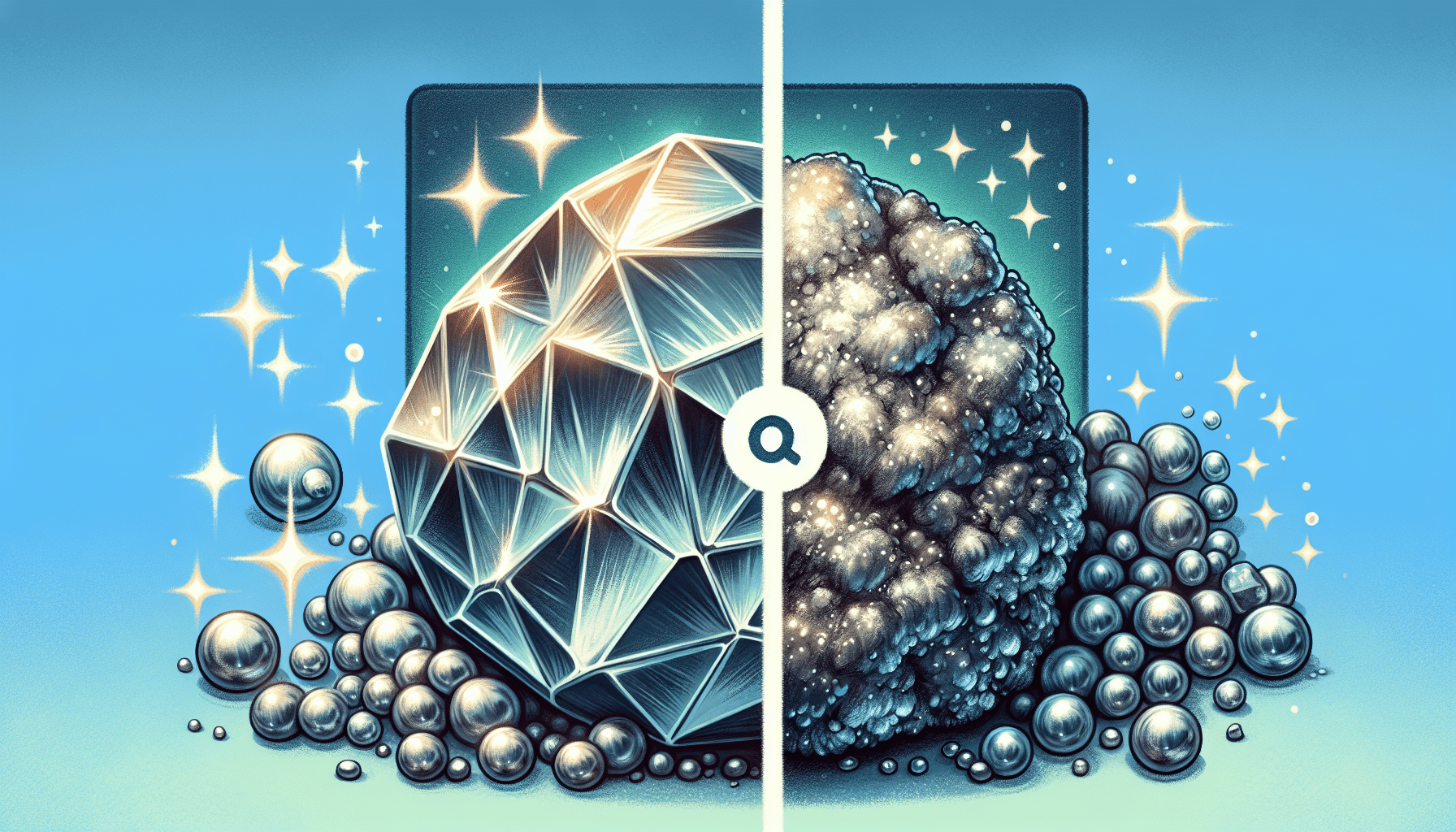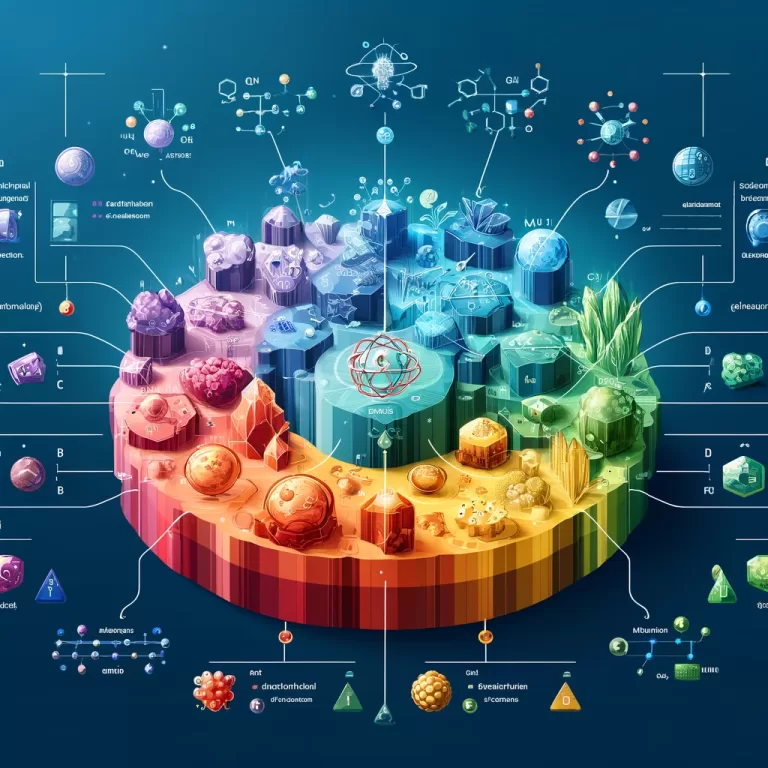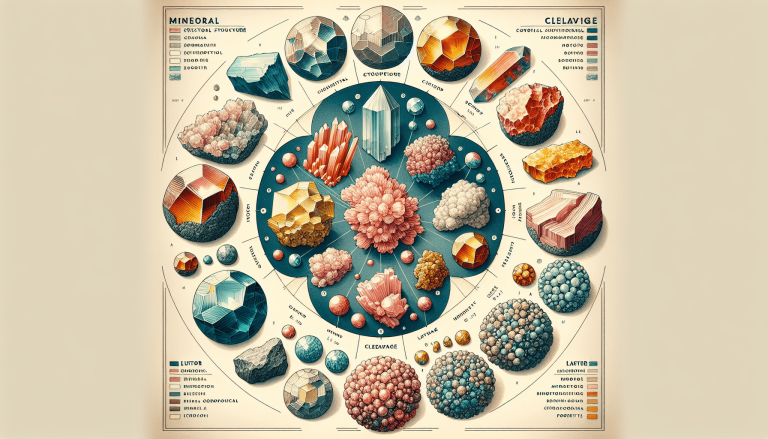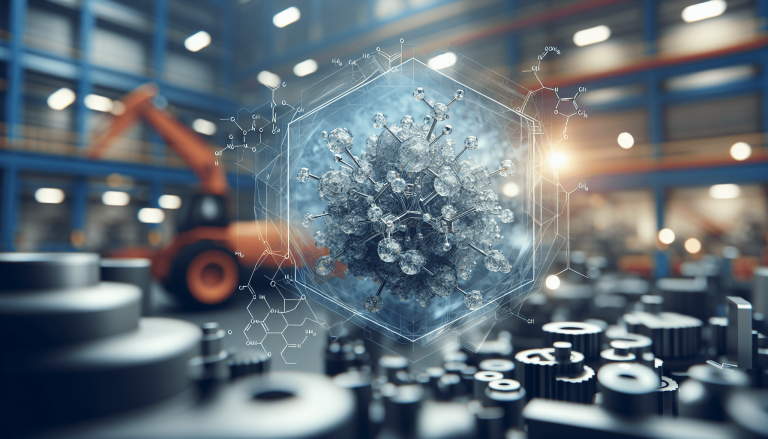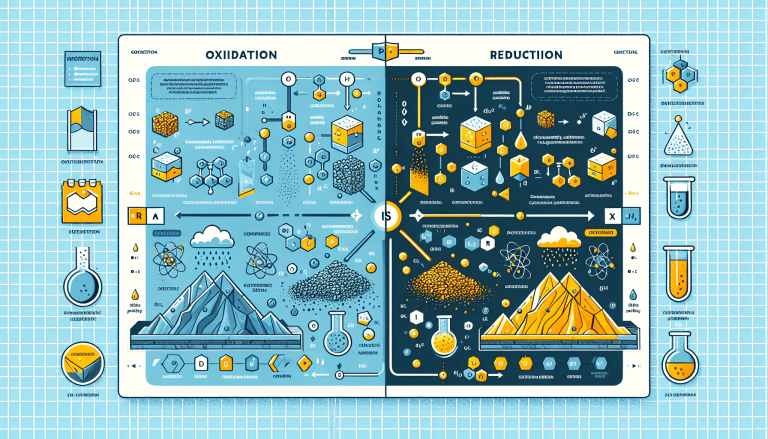Comparing The Chemical Properties Of Metallic And Non-metallic Minerals
In this article, you will explore the fascinating world of minerals and delve into the intriguing differences between metallic and non-metallic minerals. If you’ve ever wondered about the chemical properties that distinguish these two types of minerals, look no further. By understanding their composition, reactivity, and unique characteristics, you’ll gain a deeper appreciation for the role these minerals play in our everyday lives. Get ready to embark on an educational journey through the realm of metallic and non-metallic minerals and discover the fascinating chemistry behind them.
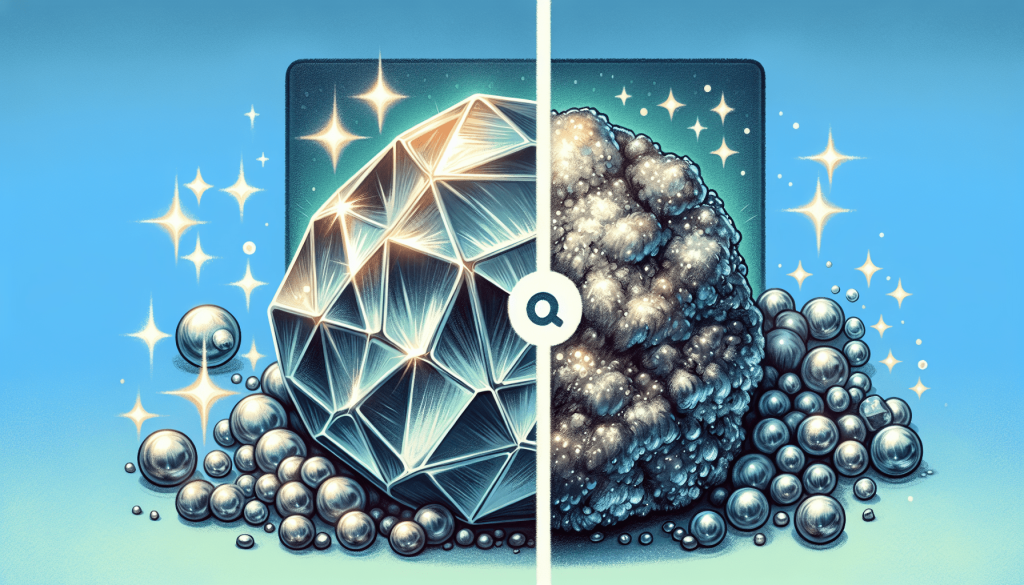
Definition of Metallic Minerals
Metallic minerals are a type of minerals that contain a high concentration of metals. These minerals are often extracted through mining, and they play a vital role in various industries. Metallic minerals are characterized by their properties, which set them apart from non-metallic minerals.
Properties of Metallic Minerals
Metallic minerals have several distinct properties that make them unique and valuable. One of the key properties is their ability to conduct electricity and heat. Metallic minerals are excellent conductors of electricity due to the movement of electrons within their atomic structure. This property is essential for the production of electrical wires, circuit boards, and other electronic components.
Another notable property of metallic minerals is their luster. Metallic minerals have a shiny appearance, known as metallic luster, which is a result of their ability to reflect light. This property is often used in jewelry-making and decorative purposes, as it gives a brilliant and attractive look.
Furthermore, metallic minerals are known for their malleability and ductility. Malleability refers to the ability of a mineral to be hammered into thin sheets without breaking, while ductility refers to its ability to be drawn into thin wires. These properties make metallic minerals highly versatile and useful in manufacturing processes, such as the production of metal sheets, wires, and other structural components.
Definition of Non-Metallic Minerals
Non-metallic minerals are a diverse group of minerals that do not possess the properties of metallic minerals. Unlike metallic minerals, non-metallic minerals do not usually contain metals and have different uses in various industries. These minerals are often extracted for their physical or chemical properties, which make them valuable in specific applications.
Properties of Non-Metallic Minerals
Non-metallic minerals have distinct properties that differentiate them from metallic minerals. One of the key properties is their lack of electrical conductivity. Unlike metallic minerals, non-metallic minerals do not allow electricity to pass through them easily. This property makes them useful in electrical insulation applications, such as in the production of electrical insulators and protective coatings.
Additionally, non-metallic minerals exhibit a wide range of physical appearances. They can have various colors, textures, and transparency levels. Some non-metallic minerals have a crystalline structure, while others are amorphous. These diverse physical appearances make non-metallic minerals desirable in industries such as construction, ceramics, and cosmetics.
Physical Appearance
Metallic Minerals
Metallic minerals generally have a metallic luster, giving them a shiny and reflective appearance. They can come in different colors, ranging from silver, gold, and copper to iron and aluminum. The physical appearance of metallic minerals depends on various factors such as impurities, crystal structure, and the presence of other minerals.
Non-Metallic Minerals
Unlike metallic minerals, non-metallic minerals exhibit a broader range of physical appearances. They can be transparent, translucent, or opaque. Some non-metallic minerals have a vitreous or glassy appearance, while others may have a pearly, silky, or earthy texture. The physical appearance of non-metallic minerals is influenced by their composition, crystal structure, and the environmental conditions under which they formed.

Luster
Metallic Minerals
Metallic minerals are characterized by their metallic luster, which is a result of their ability to reflect light. This luster gives the minerals a shiny and reflective appearance, similar to that of a metal surface. The metallic luster of these minerals is often used as an identifier when distinguishing between metallic and non-metallic minerals.
Non-Metallic Minerals
Non-metallic minerals can exhibit a variety of lusters, depending on their composition and crystal structure. Some non-metallic minerals have a vitreous or glassy luster, similar to the shine of glass. Others may have a pearly, silky, or earthy luster, giving them a different visual appearance. The luster of non-metallic minerals provides important information about their physical properties.
Conductivity
Metallic Minerals
One of the defining properties of metallic minerals is their high electrical and thermal conductivity. Metallic minerals contain a large number of free electrons that can easily move within their atomic structure, allowing the minerals to conduct electricity and heat efficiently. This property makes metallic minerals crucial in electrical, electronic, and thermal applications, such as wiring, thermal conductors, and heat sinks.
Non-Metallic Minerals
In contrast to metallic minerals, non-metallic minerals are generally poor conductors of electricity and heat. They lack the abundance of free electrons required for efficient conductivity. Non-metallic minerals are often used as insulators in electrical applications, as they do not allow the flow of electricity. They are also used as thermal insulators in various industries, providing protection against heat transfer.
Malleability and Ductility
Metallic Minerals
Metallic minerals are known for their malleability and ductility. Malleability refers to the ability of a material to withstand deformation under compression, such as being hammered into thin sheets or rolled into thin foils. Metallic minerals can be easily shaped into different forms without breaking due to their atomic structure and the ability of metal atoms to slide past each other.
Ductility, on the other hand, refers to a material’s ability to be drawn into thin wires without breaking. Metallic minerals, due to their atomic arrangement, can be stretched into thin wires without losing their structural integrity. This property makes metallic minerals ideal for applications that require the production of wires, such as electrical wiring, cables, and conductors.
Hardness
Metallic Minerals
The hardness of metallic minerals varies depending on their composition and crystal structure. Some metallic minerals, such as gold and silver, are relatively soft and can be easily scratched. Others, like diamond, are extremely hard and have a high resistance to scratching. The hardness of metallic minerals is an important property that determines their usability in various industrial applications, including jewelry-making, cutting tools, and abrasives.
Non-Metallic Minerals
Non-metallic minerals also display a wide range of hardness levels. Some non-metallic minerals, like talc, are exceptionally soft and can be easily scratched with a fingernail. Others, such as quartz, have a high hardness and can scratch glass. The hardness of non-metallic minerals is an important factor in determining their usability in industries like construction, ceramics, and abrasives.
Corrosion Resistance
Metallic Minerals
Metallic minerals, particularly those with corrosion-resistant properties, are highly valued in various industries. Certain metallic minerals, such as stainless steel, have a high resistance to corrosion, making them suitable for applications in environments where exposure to moisture, chemicals, or high temperatures is prevalent. Their corrosion resistance ensures the durability and longevity of structures and products made from these minerals.
Chemical Reactivity
Metallic Minerals
Many metallic minerals exhibit varying degrees of chemical reactivity. Some metals, like gold and platinum, are known for their remarkable resistance to chemical reactions, making them highly valuable in industries such as jewelry-making and electronics. On the other hand, certain metals, like iron, have a high propensity for corrosion and are prone to chemical reactions with substances like oxygen and moisture.
Non-Metallic Minerals
Non-metallic minerals also possess different levels of chemical reactivity. Some non-metallic minerals, such as graphite, have a low reactivity and are relatively stable under normal conditions. Others, like sulfur, exhibit high chemical reactivity and readily react with other substances. The chemical reactivity of non-metallic minerals plays a crucial role in their various industrial applications, such as in the production of fertilizers, chemicals, and pharmaceuticals.
Usage and Applications
Metallic Minerals
Metallic minerals find widespread usage in numerous industries. They are essential in construction for structural purposes, as metals possess high strength and durability. Metallic minerals, such as iron ore, are used in the production of steel, a crucial material in the construction and manufacturing sectors. Additionally, metallic minerals like copper and aluminum are utilized in electrical wiring, machinery manufacturing, and transportation due to their excellent conductivity and malleability. Precious metals, such as gold and silver, are sought after for their value and are used extensively in jewelry-making and monetary systems.
Non-Metallic Minerals
Non-metallic minerals have diverse applications across various industries. For instance, minerals like limestone, gypsum, and marble are used in construction and building materials due to their strength, durability, and aesthetic appeal. Clay minerals are utilized in the production of ceramics, pottery, and refractory materials due to their ability to withstand high temperatures. Non-metallic minerals like talc and silica find use in the cosmetics and personal care industry, while others are employed in the production of fertilizers, glass, and abrasives.
In conclusion, metallic and non-metallic minerals have distinct properties that make them valuable in different applications. Metallic minerals possess high electrical conductivity, luster, malleability, and ductility, making them ideal for electrical, electronic, and structural purposes. Non-metallic minerals, on the other hand, lack these metallic properties but offer diverse physical appearances, insulation properties, and chemical reactivity. Both types of minerals have significant roles in various industries, contributing to the development and advancement of modern society.

